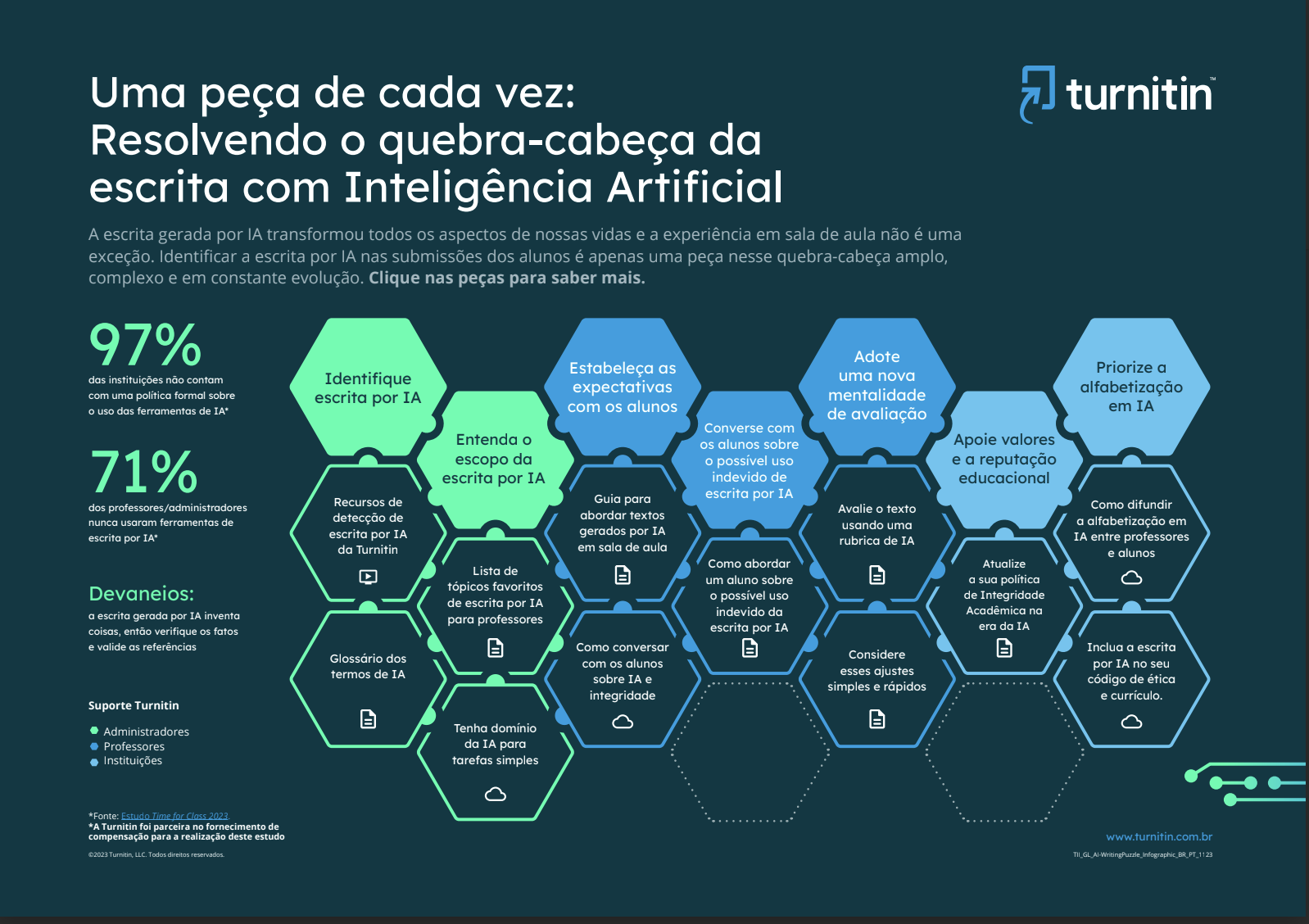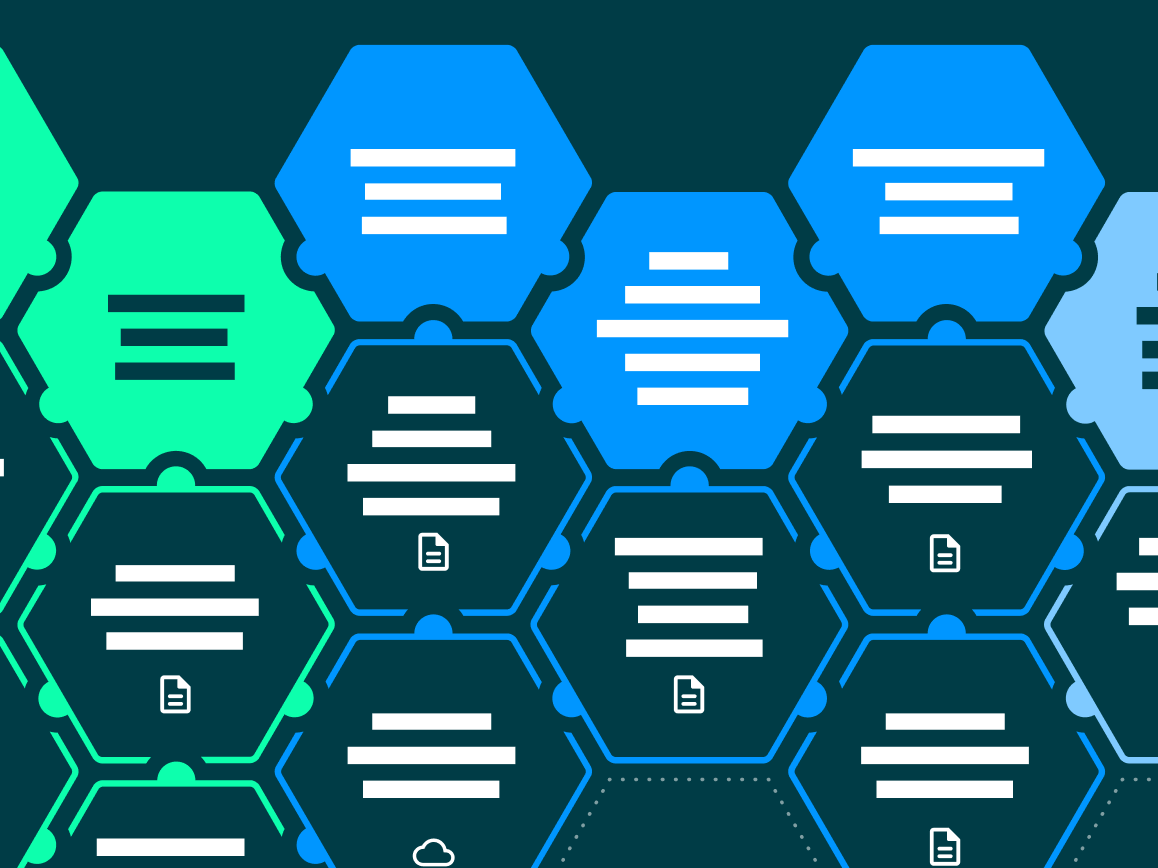Fellow educators - how many of us knew that 48% of students have already tried using AI writing tools, like ChatGPT? And in contrast, an astounding 71% of instructors and administrators have never used these tools, while 32% reported that they are not even aware of these tools?*
Considering these statistics, it's easy to understand why many in the educational community have focused time and energy exclusively on identifying AI writing in student submissions. However, that cannot and should not be the only element we’re considering. There are many other factors—or puzzle pieces—to consider.
How has ChatGPT impacted the education landscape?
ChatGPT and similar AI writing tools have made significant inroads into education, reshaping the academic landscape in several ways. On the positive side, these tools offer notable convenience, enabling instructors to quickly generate teaching materials, provide instant feedback, and even automate routine administrative tasks. They have the potential to enhance personalized learning by tailoring content to individual students and their unique needs, fostering a more engaging and efficient learning environment. Additionally, ChatGPT can assist in bridging language barriers, making education more accessible on a global scale.
However, it's essential to acknowledge the challenges as well. The reliance on AI writing tools raises concerns about academic integrity, requiring educators and administrators to adapt and revise policies to ensure ethical use. Furthermore, there's a risk that excessive dependence on AI may undermine critical thinking skills and the development of authentic, independent thought in students.
There are so many facets to consider. And as the one-year anniversary of ChatGPT quickly approaches in November, I want to challenge you, educators, institutions, and administrators. Let’s all take a step back and view generative AI writing through a broader lens and see the challenge this technology presents as a complex puzzle.
AI writing: A complex puzzle
AI writing tools are intricate and ever-evolving, and just like a puzzle, if we focus only on one piece—AI writing detection—we are missing the bigger, more important picture. We are missing vital puzzle pieces that are key to academic integrity, success, and development in the classroom, pieces such as institutional policy updates, valuable conversations with students, and assessment evolution.
This big picture perspective is absolutely essential because what we know now that we did not know in November of 2022, is that AI-generated writing is not a binary concept with rigid lines around what is/is not acceptable. Instead, this technology is a true disruption, requiring us to rethink many aspects of our world, from education to the workforce and beyond. To meet that challenge, educators will need to help students learn how to effectively and ethically incorporate AI writing in their assignments and in their future professional work.
Many of us see the great potential of this disruption, but even for those who fear it or perceive it as inherently wrong, we must all acknowledge that AI writing isn’t going away. Like other disruptive technology throughout history—the printing press, the calculator, the internet—it will only become more integrated into our daily lives. And like those other disruptive technologies, educators will be on the front lines, helping students (and society!) understand how, when, and if to use it, to understand ethical considerations, and to understand the implications of those choices.

To help the educational community visualize the complex network of factors around using AI-writing tools and begin to navigate all aspects of the technology, Turnitin developed this interactive puzzle. Users can click on each piece to learn more, download resources, read expert perspectives, and more.
How can educators influence the role of AI writing in the classroom?
As mentioned before, AI writing detection is simply one component; it is the beginning of a process, not the final outcome. Turnitin firmly believes that experienced, expert educators working directly with students should always make final decisions based on all of the information available to them. There is no substitute for knowing our students, their writing style, and their educational background.
Turnitin’s AI writing detection tool is not meant to replace the educator’s professional discretion; it is meant to supply additional insights to help reach a decision. Reports such as ours provide data points and resources to support a process of working with students, not determinations of misconduct.
Just as the technology of AI generative tools has and will continue to evolve, so must our response to their presence in classrooms and lecture halls around the world. When these tools first arrived, much of the earliest response was based in panic and fear; now that they are here to stay, however, as educators, we have to take a more comprehensive approach. As technology continues to evolve, the successful integration of AI in education will depend on our ability to strike a balance between harnessing its potential and preserving the core values of education. To do that, we have to understand the many pieces of the complete puzzle, knowing that tomorrow the picture might change. While that may be daunting, what will not change is that Turnitin is prepared to be there with you, as your trusted partner.
For more information, visit Turnitin’s AI writing landing page.
*Source: Tyton Time for Class 2023 study. Turnitin was a partner in providing compensation to conduct this study.




